
|
PGD2 |
Pgd2 is a lipid of Fatty Acyls (FA) class. Pgd2 is associated with abnormalities such as Inflammatory disorder, Pleurisy, Rhinitis, Dehydration and Pneumonia. The involved functions are known as antagonists, fat cell differentiation, Phosphorylation, Process and Gene Expression. Pgd2 often locates in Cell surface, Body tissue, Extracellular, Bone Marrow and Membrane. The associated genes with PGD2 are oxytocin, 1-desamino-(O-Et-Tyr)(2)-, P4HTM gene, PTGS2 gene, PTGDS gene and IL3 gene. The related lipids are 15-deoxyprostaglandin J2, Nonesterified Fatty Acids, Lipopolysaccharides, Steroids and Liposomes. The related experimental models are Knock-out and Rodent Model. |
6464 |

|
EPA |
Epa is a lipid of Fatty Acyls (FA) class. |
5952 |

|
Linoleic acid |
Linoleic acid is a lipid of Fatty Acyls (FA) class. Linoleic acid is associated with abnormalities such as Diabetes Mellitus, Non-Insulin-Dependent, Metabolic syndrome, Obesity, Chronic Obstructive Airway Disease and Pneumonia. The involved functions are known as Insulin Resistance, Inflammation, Synthesis, Pathological accumulation of air in tissues and cytokine biosynthesis. The associated genes with Linoleic acid are TNF gene, CCL2 gene and TLR4 gene. The related lipids are palmitoleic acid, nervonic acid and Sphingolipids. |
5699 |

|
stearic acid |
stearic acid is a lipid of Fatty Acyls (FA) class. Stearic acid is associated with abnormalities such as Helminthiasis, Exanthema, Chronic disease, Obesity and Dyslipidemias. The involved functions are known as acyltransferase activity, Mutation, Cell division, cell fate and Fatty Acid Metabolism. Stearic acid often locates in membrane fraction, Mouse Liver, Membrane, Body tissue and Endoplasmic reticulum, membrane. The associated genes with stearic acid are Homologous Gene, ACLY gene, Transgenes, FATE1 gene and Alleles. The related lipids are Lysophospholipids, Stearic acid, Fatty Acids, cis-vaccenic acid and Phosphatidylserines. The related experimental models are Knock-out. |
5692 |

|
4-hydroxynonenal |
4-hydroxynonenal is a lipid of Fatty Acyls (FA) class. 4-hydroxynonenal is associated with abnormalities such as Chronic disease, Obesity, Diabetes, Acquired Immunodeficiency Syndrome and Lung diseases. The involved functions are known as protein expression, Glycolysis, mRNA Expression, Regulation and Mitochondrion in division. 4-hydroxynonenal often locates in Muscle, Mitochondria, Adipose tissue, Head and Mouse Muscle. The associated genes with 4-hydroxynonenal are STAT3 gene, SIRT1 gene, PGC gene, IL6 gene and cytochrome c''. The related lipids are Lipopolysaccharides, Lipid Peroxides, Promega, Membrane Lipids and oxidized lipid. The related experimental models are Mouse Model, Knock-out, Transgenic Model, Disease model and Rodent Model. |
5685 |
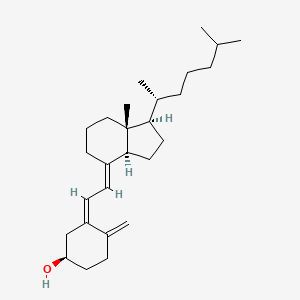
|
3-epivitamin D3 / 3-epicholecalciferol |
3-epivitamin d3 / 3-epicholecalciferol is a lipid of Sterol Lipids (ST) class. 3-epivitamin d3 / 3-epicholecalciferol is associated with abnormalities such as Vitamin D Deficiency. The involved functions are known as Cell Proliferation, cholesterol desmolase activity and Cytokinesis of the fertilized ovum. 3-epivitamin d3 / 3-epicholecalciferol often locates in Blood, Body tissue, Mitochondria, Entire gastrointestinal tract and Integumentary system. The related lipids are 7-dehydrocholesterol, Dehydrocholesterols, zymosterol and isotachysterol. |
5598 |

|
trichostatin A |
Trichostatin is a lipid of Polyketides (PK) class. Trichostatin is associated with abnormalities such as Dentatorubral-Pallidoluysian Atrophy, PARAGANGLIOMAS 3, abnormal fragmented structure, Disintegration (morphologic abnormality) and Hyperostosis, Diffuse Idiopathic Skeletal. The involved functions are known as Acetylation, Cell Differentiation process, histone modification, Gene Silencing and Transcriptional Activation. Trichostatin often locates in CD41a, Hematopoietic System, Chromatin Structure, Blood and Endothelium. The associated genes with Trichostatin are SPI1 gene, CELL Gene, Chromatin, CXCR4 gene and DNMT1 gene. The related lipids are Butyrates, Promega, butyrate, Lipopolysaccharides and Steroids. The related experimental models are Knock-out, Mouse Model, Xenograft Model and Cancer Model. |
5401 |

|
quercetin |
quercetin is a lipid of Polyketides (PK) class. Quercetin is associated with abnormalities such as Coronary heart disease, Myocardial Infarction, Cirrhosis, Coronary Arteriosclerosis and Vascular ring. The involved functions are known as Vasodilation, physiological aspects, Fermentation, Process and Ingredient. Quercetin often locates in Arterial system, Endothelium, Skin, Endothelium, Vascular and Tissue specimen. The associated genes with quercetin are P4HTM gene, SULT gene, UGT1A1 gene, ARHGAP26 gene and PLXNB1 gene. The related lipids are blood lipid, Promega, Steroids, Phosphatidylserines and Fatty Acids. The related experimental models are Knock-out, Mouse Model, Xenograft Model, Tissue Model and Cancer Model. |
5377 |

|
Anandamide |
Anandamide is a lipid of Fatty Acyls (FA) class. Anandamide is associated with abnormalities such as Dehydration. The involved functions are known as Process, Phenomenon, Phosphorylation, Catabolic Process and Gene Expression. Anandamide often locates in Nuchal region, Microglial and Hepatic. The associated genes with Anandamide are SGPL1 gene, SPTLC1 gene, RPSA gene, KDSR gene and SMPD1 gene. The related lipids are Sphingolipids, Lipopolysaccharides, Lysophospholipids, LYSO-PC and lysophosphatidylethanolamine. |
4747 |
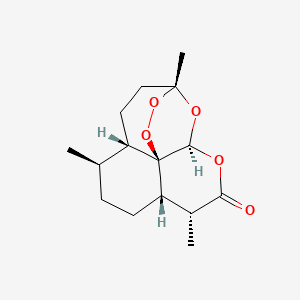
|
Artemisin |
Artemisin is a lipid of Prenol Lipids (PR) class. Artemisin is associated with abnormalities such as Malaria, Falciparum. The involved functions are known as Pressure- physical agent and secondary metabolic process. |
4738 |

|
daidzein |
daidzein is a lipid of Polyketides (PK) class. Daidzein is associated with abnormalities such as Cardiovascular Diseases, Osteoporosis, Heart Diseases, Thyroid Diseases and Exanthema. The involved functions are known as Cell Growth, Disease Progression, metaplastic cell transformation, Cell Cycle and M Phase Cell Cycle Arrest. Daidzein often locates in Urothelium, Mucous Membrane, Chromosomes, Epithelium and Ribosomes. The associated genes with daidzein are Tumor Suppressor Genes, Genome, TIRAP gene, TICAM2 gene and Candidate Disease Gene. The related lipids are Promega, Steroids, Saponins, enterodiol and linoleates. The related experimental models are Xenograft Model, Knock-out, Mouse Model, Breast Cancer Model and Arthritis, Experimental. |
4463 |

|
apigenin |
apigenin is a lipid of Polyketides (PK) class. Apigenin is associated with abnormalities such as Morphologically altered structure, Chimera disorder, Hypertensive disease, infection induced and Infection. The involved functions are known as inhibitors, Gene Expression, Process, Metabolic Inhibition and Cell Death. Apigenin often locates in Vacuole, Cytoplasmic matrix, Cytoplasm, Tissue membrane and Membrane. The associated genes with apigenin are MSMP gene, BCL2 gene, PTGS2 gene, Chromatin and SLC33A1 gene. The related lipids are Lipopolysaccharides, Steroids, 1-Butanol, agosterol A and Butyrates. The related experimental models are Mouse Model, Tissue Model, Knock-out, Xenograft Model and Disease model. |
4250 |

|
6-aminohexanoic acid |
6-aminohexanoic acid is a lipid of Fatty Acyls (FA) class. 6-aminohexanoic acid is associated with abnormalities such as Blood Clot, Myocardial Infarction, Cerebrovascular accident, Renal impairment and Scoliosis, unspecified. The involved functions are known as Fibrinolysis, Agent, Hemorrhage, plasminogen activation and inhibitors. 6-aminohexanoic acid often locates in Chest, Blood, Body tissue, peritoneal and Plasma membrane. The associated genes with 6-aminohexanoic acid are P4HTM gene, BSND gene, MTPN gene, NDUFS4 gene and Homologous Gene. The related lipids are Phosphatidylserines and Butyric Acid. |
3685 |
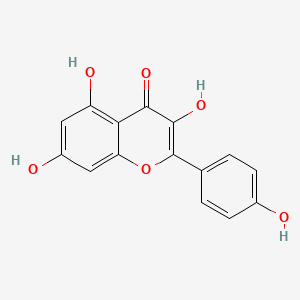
|
kaempferol |
kaempferol is a lipid of Polyketides (PK) class. Kaempferol is associated with abnormalities such as Cardiovascular Diseases, IMMUNE SUPPRESSION, Inflammatory disorder, Dermatitis, Atopic and Asthma. The involved functions are known as enzyme activity, antagonists, DNA Binding, Anabolism and Transcription, Genetic. Kaempferol often locates in aryl hydrocarbon receptor complex, Cytoplasmic matrix, soluble, BL21 and Vacuole. The associated genes with kaempferol are CYP1A1 gene, AHR gene, Genes, Reporter, Candidate Disease Gene and Alleles. The related lipids are Fatty Acids, Steroids, Lipopolysaccharides, Total cholesterol and Palmitates. The related experimental models are Knock-out, Xenograft Model, Breast Cancer Model, Disease model and Animal Disease Models. |
3675 |

|
1-Oleoyl Lysophosphatidic Acid |
1-Oleoyl Lysophosphatidic Acid is a lipid of Glycerophospholipids (GP) class. 1-oleoyl lysophosphatidic acid is associated with abnormalities such as Myocardial Infarction, early pregnancy, Scleroderma, Blind Vision and Hyperlipidemia. The involved functions are known as Agent, Blood coagulation, Selection, Genetic, Analyte and Biological Processes. 1-oleoyl lysophosphatidic acid often locates in Tissue specimen, Body tissue, Blood, Membrane and Skin. The associated genes with 1-Oleoyl Lysophosphatidic Acid are Mucin-16, Peptides, SMAD4 gene, RND1 gene and Polypeptides. The related lipids are lysophosphatidic acid, A(2)C, Lysophospholipids, Fatty Acids and sphingosine 1-phosphate. The related experimental models are Mouse Model, Knock-out, Cancer Model, Xenograft Model and Arthritis, Adjuvant-Induced. |
3463 |
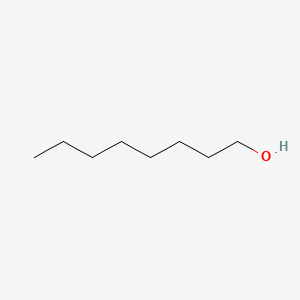
|
n-octanol |
N-octanol is a lipid of Fatty Acyls (FA) class. N-octanol is associated with abnormalities such as Wiskott-Aldrich Syndrome. The involved functions are known as Mutation and Detergents. N-octanol often locates in Tissue membrane. The related lipids are Octanols and 1-Octanol. |
3305 |

|
luteolin |
luteolin is a lipid of Polyketides (PK) class. Luteolin is associated with abnormalities such as Morphologically altered structure, Nodule, retinal toxicity, CLEFT LIP, CONGENITAL HEALED and Ischemia. The involved functions are known as Metabolic Inhibition, Cell Death, Caspase Activation, activation of protein kinase C activity by G-protein coupled receptor protein signaling pathway and protein kinase C activity. Luteolin often locates in Mitochondria, Cell-Free System, Protoplasm, Membrane and Body tissue. The associated genes with luteolin are BCL2 gene, TNFSF10 gene, BCL2L1 gene, XIAP gene and MCL1 gene. The related lipids are Lipopolysaccharides, Sterols, blood lipid, Fatty Acids and Steroids. The related experimental models are Xenograft Model, Mouse Model, Experimental Autoimmune Encephalomyelitis, Knock-out and Cancer Model. |
3284 |
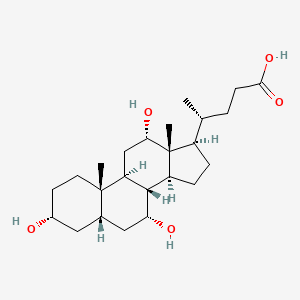
|
Cholic acid |
Cholic acid is a lipid of Sterol Lipids (ST) class. Cholic acid is associated with abnormalities such as Cholestasis, Intrahepatic Cholestasis, Atherosclerosis, Diabetes and cholesterol gallstones. The involved functions are known as Homeostasis, Enterohepatic Circulation, Proliferation (morphologic abnormality), Process and Cell Proliferation. Cholic acid often locates in Hepatic, Cytoplasmic matrix, Membrane, Protoplasm and Tissue membrane. The associated genes with Cholic acid are CYP27A1 gene, ABCB11 gene, NR5A2 gene, SLC10A2 gene and SLC10A1 gene. The related lipids are ursocholic acid, Steroids, Cholestenes, Cholestanes and cholanic acid. |
3054 |

|
Gossypol |
Gossypol is a lipid of Prenol Lipids (PR) class. Gossypol is associated with abnormalities such as Paralytic Ileus, PARKINSON DISEASE, LATE-ONSET, Fibrillation, Hepatic necrosis and Lymphopenia. The involved functions are known as Atrophic, Ulcer, Necrosis, Apoptosis and antagonists. Gossypol often locates in Mucous Membrane, Epithelium, Blood, Microsomes, Liver and Autophagic vacuole. The associated genes with Gossypol are BCL2A1 gene, BCL2 gene, Transgenes, IGH@ gene cluster and Bax protein (53-86). The related lipids are Promega, proteoliposomes, Phosphatidylserines and Liposomes. The related experimental models are Transgenic Model and Xenograft Model. |
2557 |
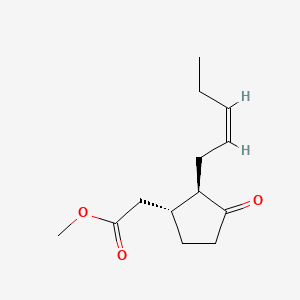
|
Methyl jasmonate |
Methyl jasmonate is a lipid of Fatty Acyls (FA) class. Methyl jasmonate is associated with abnormalities such as Infection, abnormal fragmented structure, Disintegration (morphologic abnormality), Parasitic Diseases and Contracture. The involved functions are known as Stimulus, Signal, Cell Death, Infiltration and Mutation. Methyl jasmonate often locates in Extracellular, Plasma membrane, Cytoplasm, Cell Wall and Body tissue. The associated genes with Methyl jasmonate are Polypeptides, Homologous Gene, NPR1 gene, systemin and Locus. The related lipids are Fatty Acids, Saponins and Oxylipins. |
2442 |



















